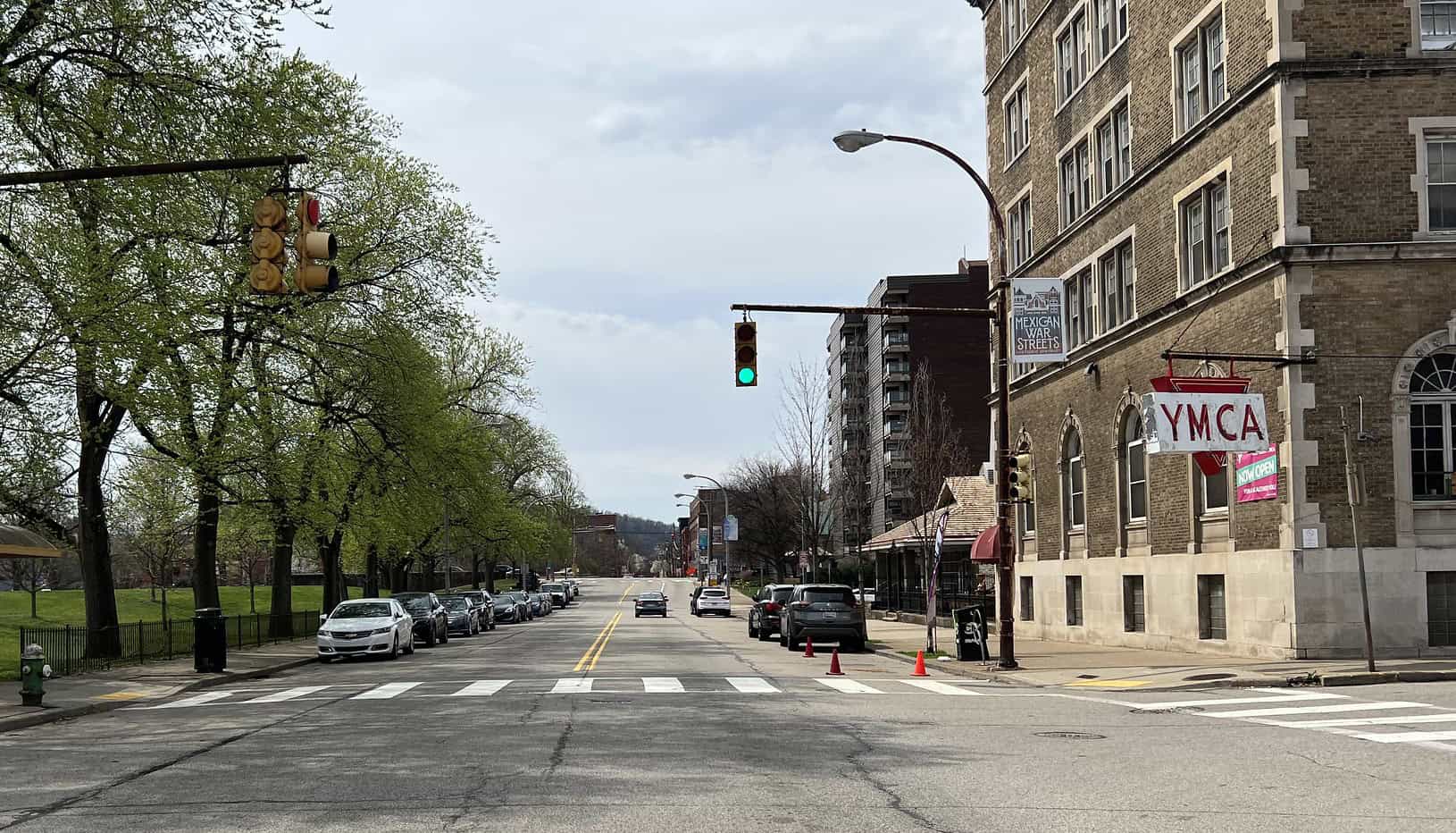
Simple changes, like crosswalks or even bike lanes, may be added as part of a street repaving project
Don’t overlook this tactic in your safe streets work
Getting a specific project listed in the City’s Capital Budget is not the only way for advocates to gain improvements for biking and walking. Often, improvements can happen when tied to other existing work that a municipality is already undertaking. While never a sure win, safe streets activists can help pave the way towards change.
In Pittsburgh in 2024, it will be important to think creatively about these types of opportunities as the City’s Capital Budget focuses on completing the backlog of existing projects rather than starting new ones, unless it involves rehabilitating a bridge.
Every year the city needs to repave streets, and within the repaving budget lies opportunities for simple, but effective changes to how and where lines are striped as part of the repaving. They have to put the lines back anyway, so why not build back better?
By paying close attention to the paving schedule, advocates can see when streets near them are scheduled to be repaved and request a change to the street design that makes it safer for people who bike, walk, and roll. Although these are often small changes, they can make a big difference!
This approach also conforms to the City’s Complete Streets Policy which states that Complete Streets improvements must be considered within “the City’s annual paving program” and maintenance projects, as long as the change won’t cause significant hardship, add undue cost burdens, be structurally infeasible, or threaten public safety.
We’ve seen this play out in multiple locations in the past. For instance, when Phineas St in the Northside was repaved in 2017, there was room to add a bike lane as part of the repaving. This also happened again on Chestnut St.
Make a plan & make the case
When calling for improvements to streets on the paving list, it’s important to be prepared and make the request to the appropriate people. While the City occasionally improves streets without prompting, hearing from concerned citizens is often required for the City to act.
Once the asphalt plants open in April, the City’s Department of Mobility and Infrastructure (DOMI) keeps an up to date list on their Milling and Paving Schedule website. After reviewing existing conditions and 311 requests, DOMI will begin adding streets to this list. Not every street will be added at once, so it’s wise to continue to monitor the list throughout the season.
Even though we usually won’t know what streets are getting repaved until April, it’s a good idea to predict where repaving may occur. In some circumstances this is pretty obvious, and it never hurts to send a 311 request for a fresh pavement. At this stage, it’s also important to check that the road is locally owned and not PennDOT-owned. Locally owned roads are simply easier for the City to change.
Next, take your best guess on whether your improvement is easy to install without needing to make any major, disruptive changes. If your idea requires significant parking or travel lane removal, or changes to transit or general traffic flow, the chances that the improvement happens during the repaving process is pretty slim.
One of the best places to look and build your case for an improvement would be to see if your idea has already been identified in an existing plan such as the City’s Bike (+) Plan, a neighborhood plan, or the Pedestrian Safety Action Plan. Simply being included in an existing plan gives a project a leg up toward implementation by showing a documented community need.
Once a section of road is identified with the above criteria, it’s time to start the process of raising awareness of the change to the appropriate decision-makers. A first step should always include writing to your councilperson. In the letter or email, be sure to mention whether the change is already on an existing plan and be sure to reference the Complete Streets Policy. Let them know that the street is due for repaving and that the City will need to act fast. But most importantly, be sure to tell your story about your experiences using the road, and how the improvement will help improve your life and neighborhood. You’ll help make the case even stronger if you can show a demonstrated level of community support. This could include a sign-on letter from residents or simply documenting any problems with pictures or videos. Finally, demonstrating a past history of crashes, using DOMI’s crash map, will also help you build your case.
You may want to go for a “walk audit” or “bike audit” of your neighborhood to take note of areas that are unsafe or inaccessible and need improvement. These toolkits can help you plan your walk/bike audit and consider possible changes: AARP Walk Audit Toolkit & AARP Bike Audit Toolkit. Reach out to advocacy@bikepgh.org for help thinking through your own audit(s)! This is a good opportunity to invite your councilperson to see the problem firsthand and hear about your ideas for a solution.
It’s always a good idea to also send the letter to the Department of Mobility and Infrastructure, your neighborhood planner, as well as to us at BikePGH. This will help with any follow ups and reminders you will need to send.
It’s important to get on this process as early as you can, even if you aren’t sure that the street will actually get repaved this year. While this process may not work out in such a neat fashion, we hope that this gives you some advice and inspiration toward helping make Pittsburgh a better place to bike and walk.
Join our workshop on February 22nd to learn more about how to use this tactic!